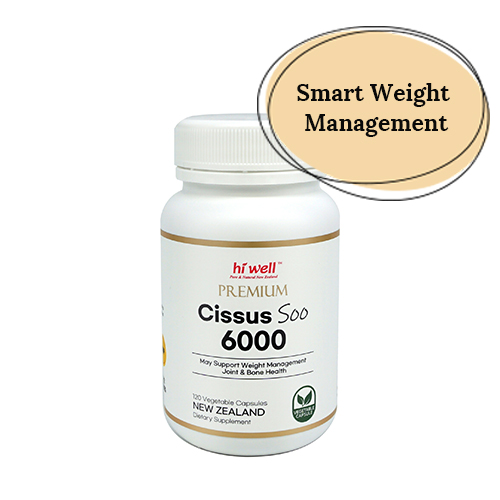

Let’s have a look at our new product ‘Premium Cissus Soo 6000 120Vegetable Capsules’. Before that, you may be unfamiliar with Cissus. Shall we take a look at what this is first?
Cissus quadrangularis?

Cissus quadrangularis?
Cissus quadrangularis, also known as veldt grape, adamant creeper, or devil’s backbone, is a plant that belongs to the grape family. Cissus quadrangularis is a plant that’s rich in vitamin C and antioxidants. It has been used to treat an array of health conditions for centuries, and, today, its extracts are widely available as herbal supplements.
Potential Benefits of Cissus quadrangularis

May promote bone health
Cissus quadrangularis may help reduce bone loss and speed the healing of fractures. In the study, taking 500 mg of Cissus quadrangularis 3 times per day for 6 weeks helped speed the healing of fractured jaw bones. It also appeared to reduce pain and swelling.
May reduce joint pain and swelling
Cissus quadrangularis has been shown to help reduce joint pain and relieve symptoms of arthritis a condition characterized by swollen, stiff joints.
May help prevent metabolic syndrome
Metabolic syndrome is a cluster of conditions that can increase your risk of heart disease, stroke, and diabetes.
The study shows that taking 300 mg of Cissus quadrangularis daily. Researchers observed that it reduced body weight, body fat, waist size, blood sugar, and total and LDL (bad) cholesterol levels.
About Hi Well Premium Cissus Soo 6000 120Vegetable Capsules
May provide the following health benefits:
- Supports weight management
- Supports post-workout recovery
- Supports joint & bone health
- Supports healthy cortisol levels
Also,,
- Vegetable capsules
- 600mg Cissus per capsules
- GMP, a quality food manufacturer
Recommended use
Adults: Take 1 to 2 capsules daily or as directed by your healthcare professional.
*Follow us for your healthy lifestyle!*
Hi Well official Instagram
Hi Well official Facebook
Amazon USA
Health NZ
※Disclaimer
The information on this site is not intended or implied to be a substitute for professional medical advice, diagnosis or treatment. All content, including text, images and information, contained on or available through this website is for general information purposes only. Hi Well Healthcare is not responsibly liable for any advice, course of treatment, diagnosis or any other information services or products that you obtain through this website.
References
1.Brahmkshatriya, H. R., Shah, K. A., Ananthkumar, G. B., & Brahmkshatriya, M. H. (2015). Clinical evaluation of Cissus quadrangularis as osteogenic agent in maxillofacial fracture: A pilot study. Ayu, 36(2), 169–173. https://doi.org/10.4103/0974-8520.175542
2.Banu, J., Varela, E., Bahadur, A. N., Soomro, R., Kazi, N., & Fernandes, G. (2012). Inhibition of Bone Loss by Cissus quadrangularis in Mice: A Preliminary Report. Journal of osteoporosis, 2012, 101206. https://doi.org/10.1155/2012/101206
3.Bloomer, R. J., Farney, T. M., McCarthy, C. G., & Lee, S. R. (2013). Cissus quadrangularis reduces joint pain in exercise-trained men: a pilot study. The Physician and sportsmedicine, 41(3), 29–35. https://doi.org/10.3810/psm.2013.09.2021
4.Oben, J. E., Ngondi, J. L., Momo, C. N., Agbor, G. A., & Sobgui, C. S. (2008). The use of a Cissus quadrangularis/Irvingia gabonensis combination in the management of weight loss: a double-blind placebo-controlled study. Lipids in health and disease, 7, 12. https://doi.org/10.1186/1476-511X-7-12









